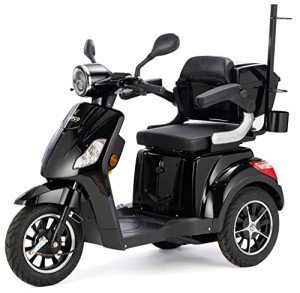A Comprehensive Guide to Buying a Mobility Scooter
Mobility scooters have ended up being an essential tool for lots of people aiming to enhance their independence and mobility. With a vast variety of designs and features offered, picking the right mobility scooter can be intimidating. This post provides a helpful guide to help customers navigate their options, assess their requirements, and make an informed purchase.
Understanding Mobility Scooters
Mobility scooters are electric cars designed for individuals who experience mobility difficulties. They are especially useful for seniors, those with impairments, or people recuperating from injuries. Mobility scooters can differ widely in regards to style, functions, and prices.
Types of Mobility Scooters
Before embarking on a purchase, it's important to understand the different kinds of mobility scooters offered:
Three-Wheel Scooters:
- Generally more maneuverable in tight spaces
- Lightweight and portable
- Suitable for indoor usage
Four-Wheel Scooters:
- Offer greater stability and balance
- Ideal for outside usage over various terrains
- Typically have a longer battery life
Foldable/Portable Scooters:
- Designed to be easily transported and stored
- Can typically fit in the trunk of an automobile
- Suitable for those who take a trip often
Durable Scooters:
- Built to accommodate larger people
- Typically come with more robust functions for outdoor use
- Normally geared up with larger batteries for prolonged variety
Factors to Consider When Buying a Mobility Scooter
1. Weight Capacity
Choose a mobility scooter that can support the user's weight. A lot of scooters have a weight limitation varying from 250 to 500 pounds. It is crucial to guarantee that the scooter can accommodate the user conveniently.
2. Range and Battery Life
The variety is how far the mobility scooter can travel on a single charge. Normal varieties differ in between 10 to 30 miles. Think about the user's everyday activities and select a scooter with a suitable range.
3. Scooter Dimensions
Consider the size of the scooter, including its weight and measurements. A more compact scooter might be ideal for narrow hallways and tight areas, while larger models provide extra stability and comfort.
4. Surface Capability
Evaluate where the scooter will mostly be used. If the user prepares to take a trip primarily on pavement, a lightweight model may suffice. However, if the user requires to pass through gravel or uneven surface areas, think about a four-wheel scooter developed for off-road use.
Top Features to Look For
Comfort
- Adjustable Seats: Look for scooters with cushioned and height-adjustable seats to ensure convenience during travel.
- Armrests: These improve safety and support while browsing.
Safety and Visibility
- Headlights and Taillights: Essential for nighttime use.
- Turn Signals and Reflectors: Improve exposure and safety while on the road.
User-Friendly Controls
- Joystick or Drive Controls: These need to be instinctive and easy to manipulate.
- Easy-to-Read Displays: A control panel that reveals battery life, speed, and distance can improve the user experience.
Extra Features
- Storage Compartments: These provide added convenience for bring individual products while on the go.
- Weather Protection: Consider models with rain covers or windshields if used in variable weather.
Cost Considerations
When budgeting for a mobility scooter, rates can range anywhere from ₤ 500 to over ₤ 5,000 depending upon the design, features, and brand name. Extra costs might include:
- Extended Warranty: Protects versus problems and can conserve cash in the long run.
- Devices: Optional features, such as upgraded seats, lights, or storage options.
| Function | Cost Range |
|---|---|
| Standard Models | ₤ 500 - ₤ 1,500 |
| Mid-Range Models | ₤ 1,500 - ₤ 3,000 |
| High-End Models | ₤ 3,000 - ₤ 5,000 |
Financing Options
Lots of sellers provide funding strategies, and some local federal government efforts might supply grants or help for those in need. Examine possible monetary support with neighborhood resources or mobility service companies.
Frequently asked questions about Buying a Mobility Scooter
What is the difference between a mobility scooter and a wheelchair?
Mobility scooters are motorized and permit users to browse independently, while wheelchairs might need physical support or manual operation.
How do I keep a mobility scooter?
Regular maintenance involves examining battery life, cleaning the scooter, and checking tires and brakes. Constantly describe the user handbook for specific guidelines.
Can mobility scooters be used inside your home?
Yes, many models are developed for both indoor and outside use. Nevertheless, three-wheel scooters tend to be better suited for indoor navigation due to their tighter turning radius.
Are mobility scooters covered by insurance coverage?
Some insurance coverage plans cover a part of the costs for mobility scooters if they are considered medically essential. Contact your service provider for particular information.
How quick can a mobility scooter go?
The majority of mobility scooters have an optimal speed ranging from 4 to 8 miles per hour. However, the appropriate rate might vary depending upon regional policies.
Getting a mobility scooter can significantly enhance one's self-reliance and quality of life. By understanding Enrique Emberson , features, and costs associated with mobility scooters, prospective buyers can make well-informed choices that match their requirements and preferences. Customization and thorough research are crucial to making sure satisfaction with this crucial investment.

